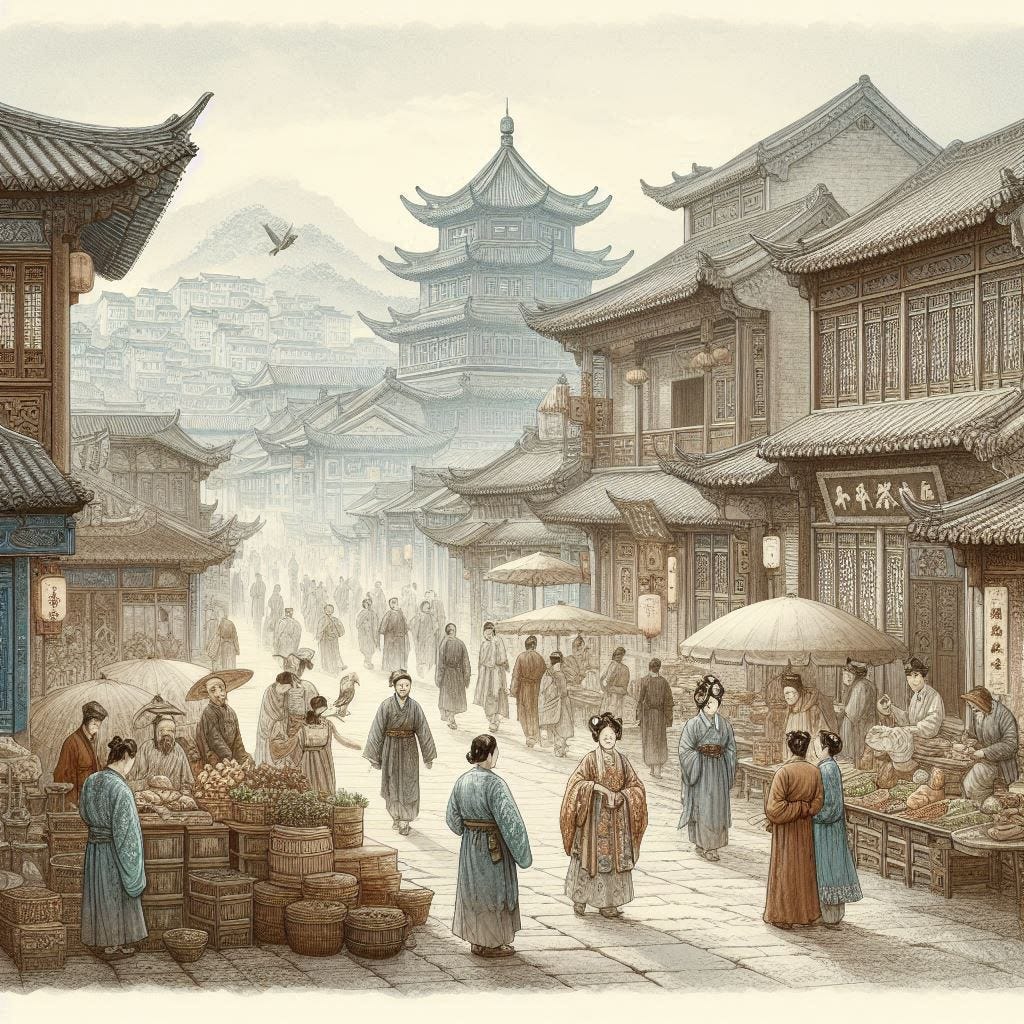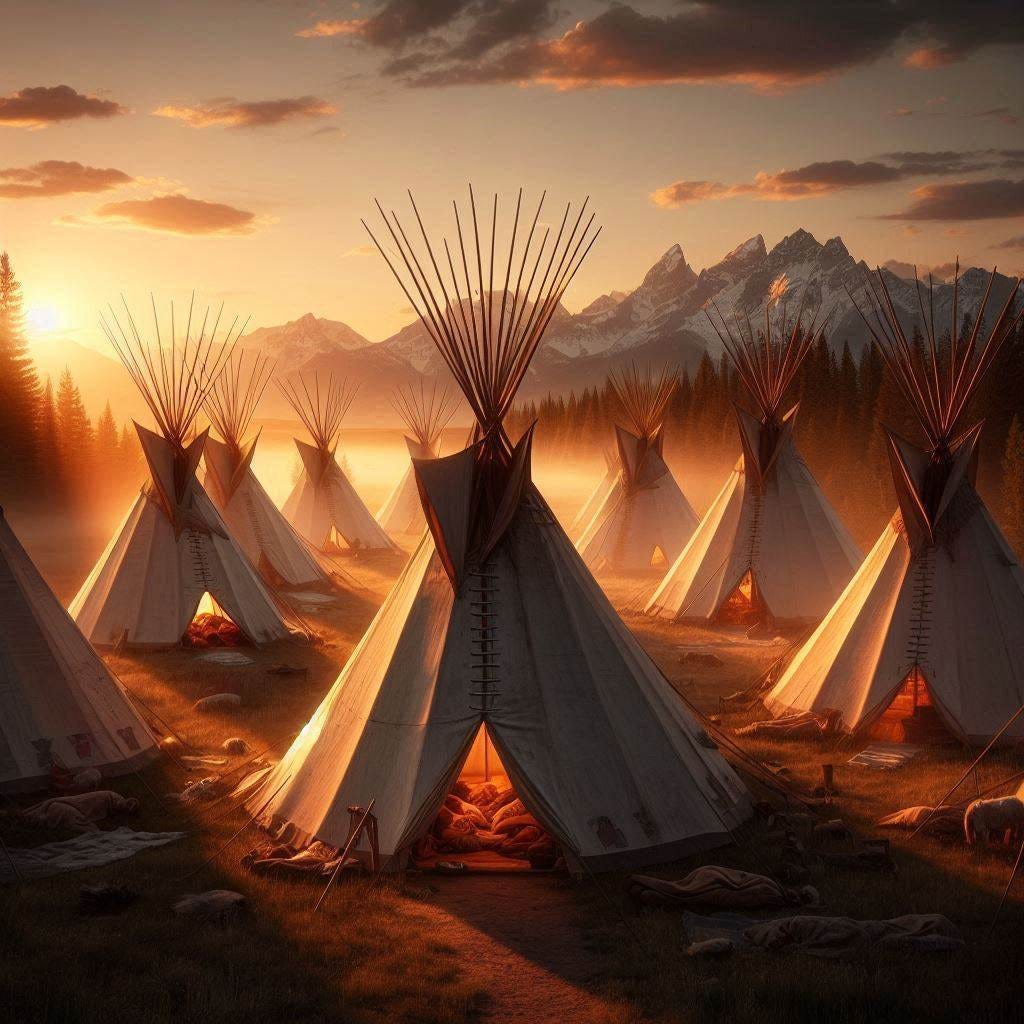The Mysteries of History (January 23 Edition)
Worst Earthquake, Killed in Their Sleep, Frisbee, Pueblo, Roots
“Those who cannot remember the past are condemned to repeat it.” — Spanish-American philosopher George Santayana, 1905
1556 — Deadliest Earthquake of All Time
image generated using Bing Image Creator
A powerful (estimated 8.0 to 8.3) earthquake struck China on this date in 1556. Although not the most powerful quake ever, it killed more people than any other (an estimated 830,000). The reason for the large number of deaths was the dense population of the area hit, and the unstable nature of the buildings.
Even if the death toll estimate is exaggerated, it was doubtless the deadliest earthquake ever, as pre-historic (before recorded history) earthquakes would have occurred when populations were much smaller.
Questions: What was the most powerful earthquake ever (when and where did it strike)? What was the most powerful earthquake ever in the United States (when and where did it strike)? What is the most powerful earthquake you've personally experienced (felt)? How many were killed in the 1976 Tangshan earthquake in China?1870 — Massacre of Sleeping Indians in Northern Montana
image generated using Bing Image Creator
On this date in 1870, in an event that was so common (like school shootings today) that most people have probably never heard of it, the Marias Massacre (previously termed the Baker Massacre) took place, when U.S. army forces attacked an encampment of sleeping Blackfeet Indians in northern Montana. To add insult to the injury, or salt to the wounds, the officer who ordered the attack, Major Eugene Baker, said that it didn’t matter to him whether the group of Native Americans he was attacking were the ones he was searching for or not. As it turns out, they weren’t; they were a peaceful band.
It’s not an excuse, but Baker may not have been thinking straight: according to his men, he had been drinking heavily throughout the entire expedition, and spent the night before the attack binge drinking.
Prior to the early-morning attack, Baker’s scout, Joe Kipp, saw that the paintings on the tipis identified those inside as part of a peaceful group. Kipp relayed that intelligence to Baker, who dismissed it, saying he didn’t care, and the fact that they were Piegans (Blackfeet) was enough for him. Not only that, Baker ordered one of his men to shoot Kipp if he tried to warn those sleeping in the camp of the imminent attack. As a result, one hundred seventy-seven Indians were killed: 37 men, 90 women, and 50 children. After Baker realized that many of the survivors were ill with smallpox, he abandoned them to fend for themselves in the harsh winter conditions, rather than escort them back to a fort, where they would have been housed and fed.
Reactions to the massacre varied widely. Baker was vilified by some, but defended by others. One journalist called Baker’s critics, “namby-pamby, sniffling old maid sentimentalists.”
Questions: What were some of the worst massacres of Indians in U.S. history? What were among the worst massacres committed by Indians against whites in U.S. history? What were among the worst massacres committed by Indians against other Indians in U.S. history? Have you read Dee Brown's "Bury My Heart at Wounded Knee"? What do you know about Wounded Knee? How do you feel about Leonard Peltier's pardon? Why do you think the 1860 Wiyot ("Indian Island") massacre near Eureka, California, was not discussed in Brown's book?1957 — First Pluto Platter (Flying Pie Tin, aka Frisbee)
public domain image from wikimedia commons
The Frisbee, as everyone probably knows, is an aerodynamic plastic disc manufactured by Wham-O (who were also behind the Hula-Hoop and the Super Ball). The first ones came off the assembly line on this date in 1957.
The Frisbee’s origin story involves people using empty pie tins from the Frisbie (note the spelling difference) pie company to toss around, calling out, “Frisbie!” as they released the improvised toys. The basic idea was converted into a more stable and airworthy and less clangy device made of plastic, earlier iterations of which were called The “Flying Saucer” and the “Pluto Platter.”
Hundreds of millions of Frisbees have been sold, and there is now Ultimate Frisbee (pictured above), Frisbee Golf, and Freestyle Frisbee. Today many companies sell a similar toy, but the official Frisbee is now owned by Mattel.
Questions: When and where was the Frisbie Pie Company founded (started)? When was the first time you ever played with a Frisbee? When was the last time you played with a Frisbee? Have you ever played Ultimate Frisbee, Frisbee Golf, or participated in Freestyle Frisbee?1968 — USS Pueblo Captured
image on left generated using Bing Image Creator, image on right public domain image from wikimedia commons
In 1968, during the Vietnam War and after the Korean War, a U.S. Navy intelligence vessel (spy ship), the Pueblo, was boarded by North Korean forces for supposedly being in North Korean rather than international waters. After a brief attack, during which three of the Pueblo crew were wounded, the Pueblo was boarded and the entire crew were bound, blindfolded, and then taken to North Korea, where they were pressured to make “confessions” and denounce their own previous actions (they had been accused of spying). When the Americans resisted, they were tortured in various ways. After eleven months, all 82 crew members were released, being allowed to cross over into South Korea before returning home.
A few months later, a North Korean fighter pilot shot down a U.S. Navy intelligence aircraft (spy plane), killing all 31 men aboard.
Questions: What led up to the Korean War? When did that war end (or did it)? What has happened between the U.S. and North Korea since the events mentioned above (from 1969 until now)? What is the "temperature" of current relations between the two countries? Who are North Korea's strongest allies? Who are North Korea's strongest enemies? Who are America's strongest allies? Who are North America's strongest enemies?1977 — Miniseries “Roots” Premieres on TV
public domain image from wikimedia commons
The eight-episode miniseries Roots premiered on this day in 1977, starring Levar Burton as Kunta Kinte, the primary protagonist. The story spanned a fictional-but-true-to-history account of an extended family, beginning in Africa in 1750, when Kinte was born, to the end of the U.S. Civil War a little over a century later. Roots was one of the most-watched (with over half the U.S. population tuning in) and most influential television programs in history. It won nine Emmys. A followup, Roots: The Next Generations, aired in 1979. A remake of the original Roots miniseries was produced in 2016.
Roots was based on a nonfictionesque book by Alex Haley, namely Roots: The Saga of an American Family (Haley also wrote the seminal “The Autobiography of Malcolm X”).
Others (besides Burton) who were cast in key roles in Roots included James Earl Jones, Maya Angelou, Ed Asner, Lloyd Bridges, Georg Stanford Brown, Chuck Connors, Sandy Duncan, Louis Gossett Jr., Lorne Greene, Scatman Crothers, Burl Ives, Richard Roundtree, O.J. Simpson, Cicely Tyson, Leslie Uggams, Ben Vereen, and even Richard Farnsworth.
Questions: Did you see Roots when it was first aired? Have you seen it since? If you have seen both the 1977 original and the 2016 remake, which one do you prefer, and why? Did you know that there is more slavery worldwide now than ever before in human history (in terms of raw numbers of those held in slavery, at least)?










